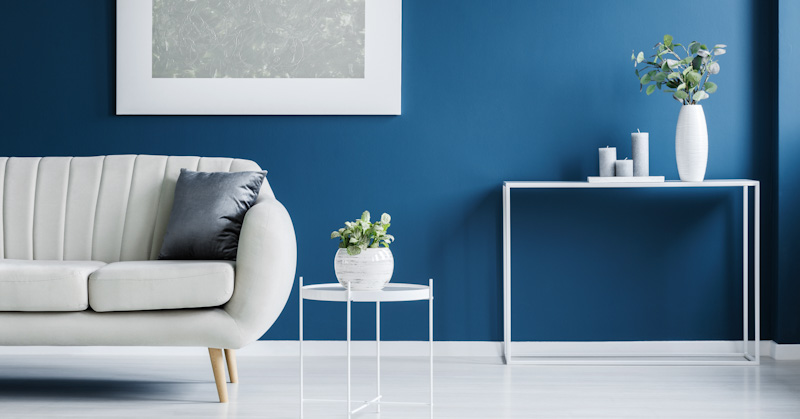Enhance Your Inside Layout With Comprehensive Shade Appointment
The assimilation of color assessment right into interior layout offers a distinct chance to fine-tune and elevate the psychological and visual resonance of a space. By involving with an experienced shade consultant, you can navigate the complexities of color option, guaranteeing that your options not just enhance building functions yet additionally reverberate with personal style and psychological effect.
Benefits of Shade Consultation

Furthermore, color examination aids in taking full advantage of all-natural light and maximizing spatial perception. Lighter colors can make an area show up even more large, while darker tones develop an intimate setting. Cleveland Metro Painting Specialists. This tactical application of color can dramatically influence the general setting of any type of interior area
In addition, specialist consultants possess a thorough understanding of ageless standards and current trends, making sure that the selected shades will remain attractive in time. This foresight can save clients from costly redesigns in the future. Shade consultation empowers clients by providing them with a clear vision and instructions, cultivating confidence in their design choices and inevitably leading to a much more effective and rewarding indoor style outcome.
Recognizing Color Psychology
The significance of shade psychology in interior decoration can not be overstated, as it looks into the mental and psychological effects that various hues can stimulate in people. Colors can affect mood, habits, and even performance, making them a crucial factor to consider in any layout project.
For circumstances, warm colors such as red, orange, and yellow are frequently linked with energy and heat. They can stimulate feelings of enjoyment and convenience, making them suitable for social areas like living rooms or cooking areas. Alternatively, amazing shades like blue, eco-friendly, and purple often tend to evoke calmness and harmony, making them excellent for bed rooms or reflection locations.
Additionally, the use of neutral tones can develop a well balanced environment by allowing the bolder colors to stick out without frustrating the senses. Comprehending these emotional impacts enables developers to produce spaces that not only look visually pleasing however likewise advertise psychological health.
Integrating shade psychology right into indoor layout involves a thoughtful selection of colors customized to the desired function of each space, eventually improving the general experience for its passengers. This awareness is critical for attaining a unified and functional indoor setting.
The Shade Wheel Clarified
It makes up primary shades-- red, blue, and yellow-- that can not be developed by blending other colors. Tertiary shades result from mixing a primary and a second color, leading to tones such as blue and red-orange.
The shade wheel aids designers comprehend the relationships between shades, consisting of complementary, analogous, and triadic plans. Corresponding shades, positioned opposite each other on the wheel, develop vibrant contrasts that can energize an area.
Making use of the color wheel in interior layout not just boosts aesthetic appeal however likewise stimulates specific emotions and atmospheres, making it a vital referral for shade assessment. Recognizing these relationships ultimately empowers designers to create rooms that are both aesthetically exciting and useful.
Picking the Right Combination
An appropriate shade scheme can unify a room, boost its functions, and evoke preferred emotions. Various spaces offer varied functions and call for palettes that show their intended usage; for instance, relaxing colors such as soft blues or environment-friendlies work well in rooms, promoting leisure.
Next, take into consideration the natural light offered. Light can considerably alter just how colors show up, so it is important you can try here to evaluate the area at different times of the day. Furthermore, consider existing building aspects and furnishings. An unified palette must complement these functions, developing a natural look throughout the area.
When choosing shades, make use of the 60-30-10 rule, which suggests that 60% of the space ought to be a dominant color, 30% a secondary color, and 10% an accent color. This proportion makes certain equilibrium and visual passion (Cleveland Metro Painting Specialists). Example shades on the walls before dedicating, as this enables you to see exactly how the shades communicate with one another and the overall atmosphere they produce in your interior layout task.
Functioning With a Shade Expert

When dealing with a shade professional, the procedure typically begins with an initial assessment. During this conference, you'll review your vision, choices, and the existing elements in your space. The consultant will certainly analyze your demands and might advise specific color schemes that straighten with your objectives.
After establishing a direction, the consultant will supply examples and visual aids to help you envision the proposed color schemes. This action is important, as colors can appear in different ways under differing illumination conditions.
In addition, a shade expert can direct you in choosing complementary home furnishings, art work, and devices to harmonize with your chosen scheme. By working together closely, you can attain a polished aesthetic that boosts your insides and produces an inviting environment. Ultimately, the this hyperlink experience of a shade professional can substantially enhance the total effect of your layout job.
Conclusion
In summary, extensive color examination serves as an essential device for boosting interior style. By leveraging professional understanding of shade psychology and spatial dynamics, a customized shade scheme can be developed to evoke particular emotions and produce a harmonious environment.
By engaging with a seasoned color specialist, you can navigate the complexities of color option, ensuring that your choices not just enhance building attributes yet additionally resonate with personal style and psychological impact. It comprises primary shades-- red, blue, and yellow-- that can not be developed by mixing other colors.The color wheel aids developers realize the partnerships in between colors, including corresponding, similar, visit our website and triadic plans.When choosing colors, utilize the 60-30-10 regulation, which recommends that 60% of the area ought to be a leading shade, 30% an additional color, and 10% an accent shade. By leveraging professional knowledge of shade psychology and spatial characteristics, a tailored shade scheme can be created to stimulate specific emotions and create a harmonious environment.